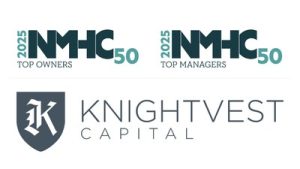We recently published a list of 7 Most Profitable Biotech Stocks To Buy Right Now. In this article, we are going to take a look at whereGenmab A/S (NASDAQ:GMAB) stands against other most profitable biotech stocks to buy right now.
With improved market conditions, innovative breakthroughs, and more investor interest, the biotechnology industry is gaining new traction. The sector has bounced back from a difficult 2024 and is set to grow significantly, thanks to developments in AI-driven drug discovery, personalized medicine, and the rising demand for biologics. The global biotech market was expected to grow by a robust 13%, from $483.0 billion in 2024 to $546.0 billion in 2025, according to MarketsandMarkets. The sector’s resilience and growth potential are demonstrated by this expansion.
One of the main causes of this upturn is the expected change in the Federal Reserve’s interest rate policies. Because biotech involves expensive R&D and clinical testing, it is susceptible to shifting rate patterns. According to Genetic Engineering and Biotechnology News, lower rates increase the amount of cash available, which aids biotech companies in growing, attracting venture capital, and accelerating drug development. Analysts predict that a rate decline might free up billions of dollars in investment money set aside for nascent biotech companies seeking stable funding.
The global biotechnology sector is undergoing transformative growth in 2025, driven by scientific breakthroughs and shifting market dynamics. Key trends, treatments, financial metrics, and the US regulatory landscape significantly impact the industry.
Genetic engineering is becoming a dominant force in biotech, with CRISPR-based therapies like Casgevy—approved for sickle cell disease and beta-thalassemia—expanding into polygenic disorders such as diabetes. Synthetic biology is also projected to experience tremendous growth, with expectations to reach $100 billion by 2030, enabling sustainable pharmaceutical and biofuel production. Another important development is AI-driven drug discovery, which has reduced drug discovery costs by 30-50% while accelerating timelines. Startups are increasingly leveraging machine learning for precision oncology and protein design.
The RNA therapeutics sector is also booming, particularly following the success of mRNA vaccines, which paved the way for RNA interference (RNAi) therapies like Fitusiran. Fitusiran has shown an impressive 89.9% reduction in bleeding events in hemophilia A/B patients. Regenerative medicine is also advancing, with innovations such as 3D bioprinting and CAR-T cell therapies entering clinical trials for organ repair and cancer treatment. The regenerative medicine market is expected to reach $37.27 billion by 2031.



